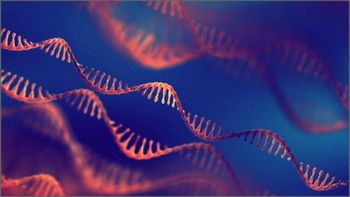
Advancements in High Spatial Resolution Mass Spectrometry Imaging for Spatial Metabolomics
A review article describes spatial metabolomics using high spatial resolution mass spectrometry imaging (MSI), a promising technology that enables the visualization and analysis of metabolites at the cellular and subcellular levels.
A new review published in TrAC Trends in Analytical Chemistry highlights the recent advances and future prospects of high spatial resolution mass spectrometry imaging (MSI) techniques for spatial metabolomics, which is an emerging field of omics research that allows localizing small molecules in tissues and cells (1). The review is authored by Wei Hang from Xiamen University in China.
MSI is a powerful and non-destructive technique that allows the visualization of the spatial distribution of molecules directly from biological samples. It uses a combination of mass spectrometry and imaging to map the distribution of molecules across a tissue or cell. High spatial resolution MSI can achieve resolutions as low as tens of nanometers, making it an ideal tool for the analysis of metabolites, lipids, and proteins at the cellular and subcellular levels. This technique enables researchers to identify, quantify, and localize molecules in complex samples.
Spatial metabolomics generates visualization information that extends the metabolomics information from point to plane, enabling the identification, quantitation, localization, and metabolic pathways of endogenous and exogenous compounds in tissues and single cells. MSI technologies allow visualizing the spatial distribution of chemicals directly from biological samples without labeling and have become increasingly valuable for biological applications.
The review summarizes the latest applications of spatial metabolomics based on high spatial resolution MSI for cellular and subcellular level imaging of metabolites. It also highlights the potential challenges in high spatial resolution MSI technology, including the need for more sensitive and selective detection methods, as well as improved image resolution and data processing.
Metabolomics research has the potential to reveal what did happen in organisms, underscoring the ability of metabolomics to directly and accurately reflect the terminal state and phenotype of organisms. Spatial metabolomics and MSI technology enable researchers to better understand how organisms respond to stimuli at different stages and discover the potential of metabolites as biomarkers for cell identification and disease diagnosis.
Overall, the review provides readers with the latest progress of high spatial resolution MSI techniques and applications in spatial metabolomics, and discusses the potential challenges that need to be addressed to fully realize the potential of this emerging field.
Reference
(1) Ma, S.; Leng, Y.; Li, X.; Meng, Y.; Yin, Z.; Hang, W. High spatial resolution mass spectrometry imaging for spatial metabolomics: Advances, challenges, and future perspectives. Trends Analyt Chem 2023, 159, 116902. DOI:
Newsletter
Join the global community of analytical scientists who trust LCGC for insights on the latest techniques, trends, and expert solutions in chromatography.





